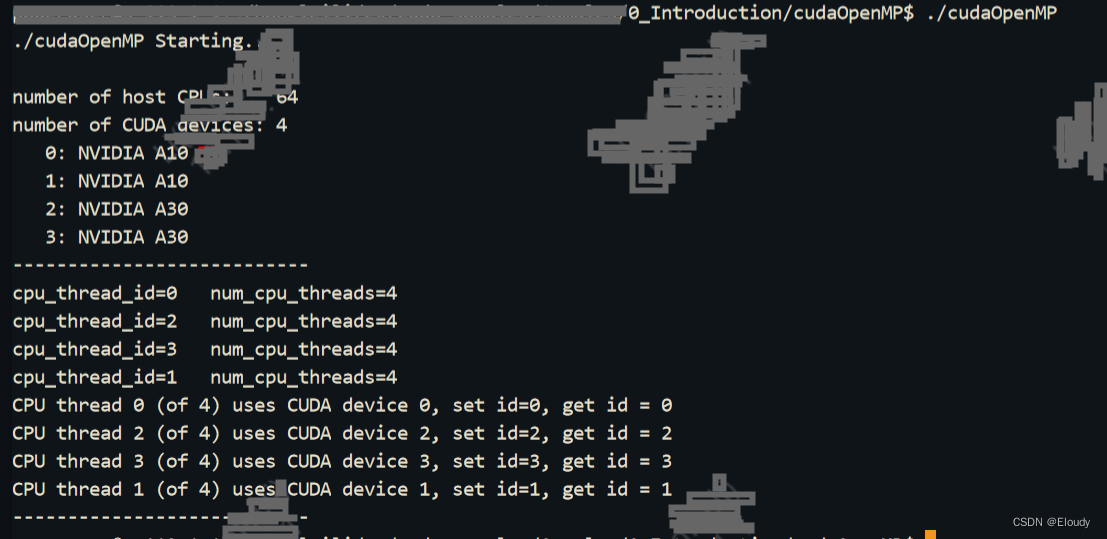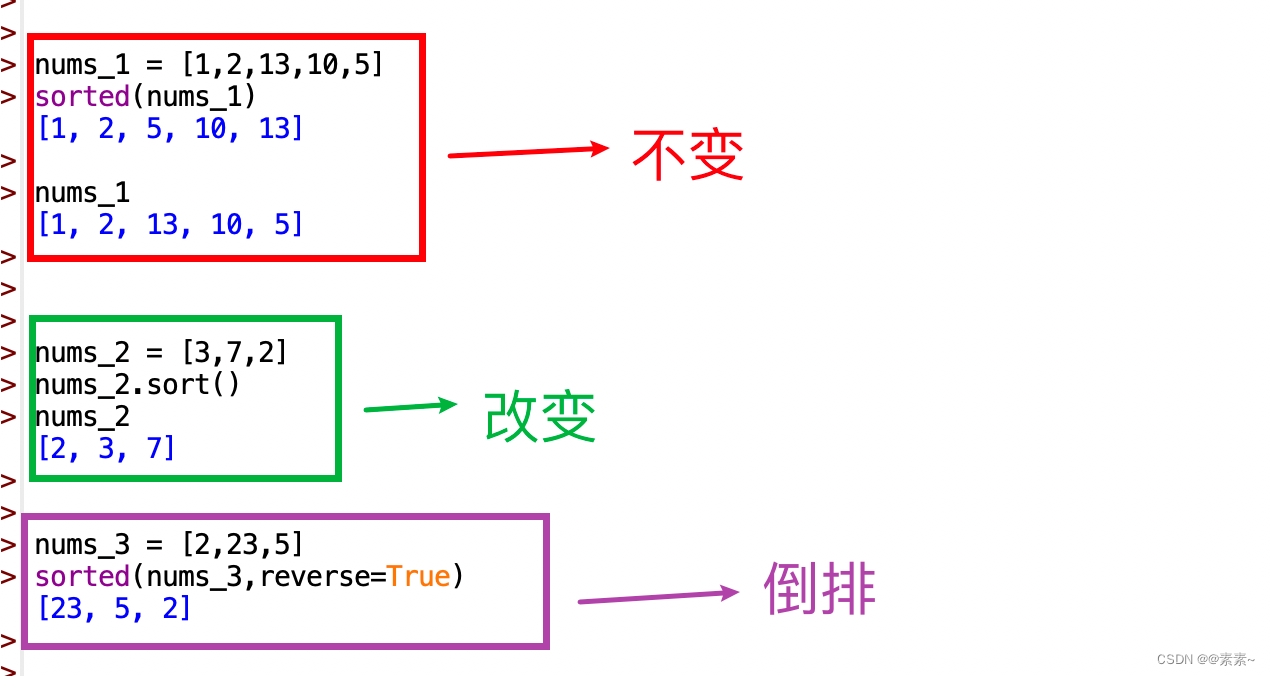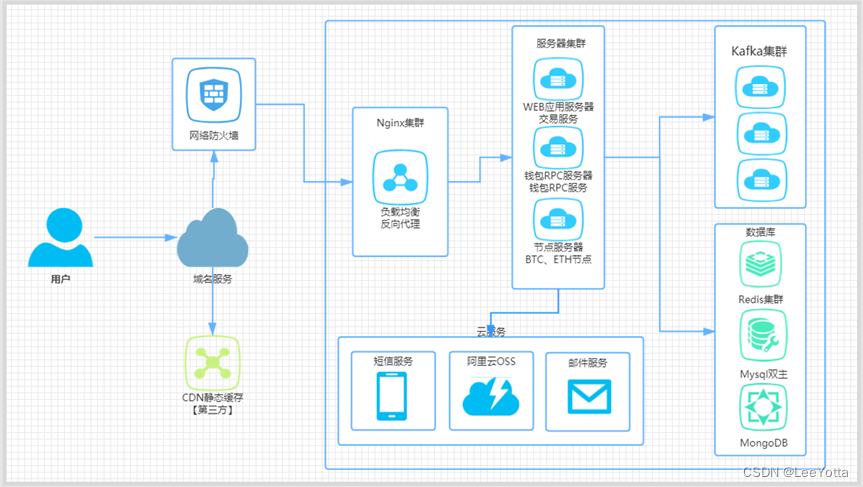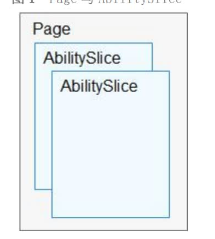1, 概述
cuda lib 线程安全的几个多线程的情景:
单卡多线程;
多卡多线程-每卡单线程;
多卡多线程-每卡多线程;
需要考虑的问题:
每个 cublasHandle_t 只能有一个stream么?
每个cusolverHandle_t 只能有一个 stream么?
每个cusolverHandle_t只能有要给cublasHandle_t么?
多个线程同时跑在多个或一个gpu上,需要使用多个stream么?都是NULL 默认stream的话,不会影响效率吧?
2, 多线程示例
从如下代码思考开去,这个多线程场景是使用了openmp自动划分任务,也可以使用pthread来七分任务,这里对这个示例进行了注释:
https://github.com/NVIDIA/cuda-samples/blob/v11.4/Samples/cudaOpenMP/cudaOpenMP.cu
/*
* Multi-GPU sample using OpenMP for threading on the CPU side
* needs a compiler that supports OpenMP 2.0
*/
//使用openmp时包含其头文件
#include <omp.h>
#include <stdio.h> // stdio functions are used since C++ streams aren't necessarily thread safe
//#include <helper_cuda.h>
#define checkCudaErrors(val) val
using namespace std;
// a simple kernel that simply increments each array element by b
__global__ void kernelAddConstant(int *g_a, const int b)
{
int idx = blockIdx.x * blockDim.x + threadIdx.x;
g_a[idx] += b;
}
// a predicate that checks whether each array element is set to its index plus b
int correctResult(int *data, const int n, const int b)
{
for (int i = 0; i < n; i++)
if (data[i] != i + b)
return 0;
return 1;
}
int main(int argc, char *argv[])
{
int num_gpus = 0; // number of CUDA GPUs
printf("%s Starting...\n\n", argv[0]);
/
// determine the number of CUDA capable GPUs
//
cudaGetDeviceCount(&num_gpus);
if (num_gpus < 1)
{
printf("no CUDA capable devices were detected\n");
return 1;
}
/
// display CPU and GPU configuration
//
printf("number of host CPUs:\t%d\n", omp_get_num_procs());
printf("number of CUDA devices:\t%d\n", num_gpus);
for (int i = 0; i < num_gpus; i++)
{
cudaDeviceProp dprop;
cudaGetDeviceProperties(&dprop, i);
printf(" %d: %s\n", i, dprop.name);
}
printf("---------------------------\n");
/
// initialize data
//
unsigned int n = num_gpus * 8192;
unsigned int nbytes = n * sizeof(int);// nbytes = num_gpus * [8192*sizeof(int)]
printf("nbytes=%u\n", nbytes);
int *a = 0; // pointer to data on the CPU
int b = 3; // value by which the array is incremented
a = (int *)malloc(nbytes);
if (0 == a)
{
printf("couldn't allocate CPU memory\n");
return 1;
}
//这里如果使用 #pragma omp parallel for 的话,会不会影响下面的线程数?
for (unsigned int i = 0; i < n; i++)
a[i] = i;
// run as many CPU threads as there are CUDA devices
// each CPU thread controls a different device, processing its
// portion of the data. It's possible to use more CPU threads
// than there are CUDA devices, in which case several CPU
// threads will be allocating resources and launching kernels
// on the same device. For example, try omp_set_num_threads(2*num_gpus);
// Recall that all variables declared inside an "omp parallel" scope are
// local to each CPU thread
//
// 通过获知GPU的数量来设定下面参与工作的线程数量
omp_set_num_threads(num_gpus); // create as many CPU threads as there are CUDA devices
//omp_set_num_threads(2*num_gpus);// create twice as many CPU threads as there are CUDA devices
//自动创建 num_gpus 个线程
#pragma omp parallel
{
//每个线程获得自己的线程号,从0开始计数
unsigned int cpu_thread_id = omp_get_thread_num();
//获取 openmp 自动创建的总的线程数
unsigned int num_cpu_threads = omp_get_num_threads();
printf("cpu_thread_id=%u num_cpu_threads=%u\n", cpu_thread_id, num_cpu_threads);
// set and check the CUDA device for this CPU thread
int gpu_id = -1;
//两个或以上的线程,可以同时使用同一个 gpu 设备;cudaSetDevice(id) 会使得本线程锁定这个 id-th gpu 设备,接下来发生的cudaXXX,都是在这个gpu上发生的。
checkCudaErrors(cudaSetDevice(cpu_thread_id % num_gpus)); // "% num_gpus" allows more CPU threads than GPU devices
checkCudaErrors(cudaGetDevice(&gpu_id));//这个函数仅仅返回本线程锁定的gpu的id。
printf("CPU thread %d (of %d) uses CUDA device %d, set id=%d, get id = %d\n", cpu_thread_id, num_cpu_threads, gpu_id, cpu_thread_id%num_gpus, gpu_id);
int *d_a = 0; // pointer to memory on the device associated with this CPU thread
//下面找到本线程需要处理的数据起始地址
int *sub_a = a + cpu_thread_id * n / num_cpu_threads; // pointer to this CPU thread's portion of data
unsigned int nbytes_per_kernel = nbytes / num_cpu_threads;//其中的 nbytes = num_gpus * [8192*sizeof(int)], 是整除关系;得到每个线程需要分配的显存字节数
dim3 gpu_threads(128); // 128 threads per block
dim3 gpu_blocks(n / (gpu_threads.x * num_cpu_threads));// n = num_gpus * 8192; 其中 8192 是128的整数倍, num_cpu_threads 是 num_gpus 的小小的整数倍;
// 这样每个block含128个线程; 每个线程需要几个block呢 = n/(gpu_threads.x * num_cpu_threads)
checkCudaErrors(cudaMalloc((void **)&d_a, nbytes_per_kernel));//在本线程所setDevice的gpu上cudaMalloc显存空间;
checkCudaErrors(cudaMemset(d_a, 0, nbytes_per_kernel));//将分的的空间刷0
// 将本线程需要处理的数据块拷贝的本线程所cudaMalloc的显存中;
checkCudaErrors(cudaMemcpy(d_a, sub_a, nbytes_per_kernel, cudaMemcpyHostToDevice));
//本线程启动kernel,处理自己的显存的数据;
kernelAddConstant<<<gpu_blocks, gpu_threads>>>(d_a, b);
// 本线程将处理好的数据拷贝到本线程负责的系统内存块中
checkCudaErrors(cudaMemcpy(sub_a, d_a, nbytes_per_kernel, cudaMemcpyDeviceToHost));
//释放显存
checkCudaErrors(cudaFree(d_a));
}
printf("---------------------------\n");
if (cudaSuccess != cudaGetLastError())
printf("%s\n", cudaGetErrorString(cudaGetLastError()));
// check the result
//对计算结果进行对比
bool bResult = correctResult(a, n, b);
if (a)
free(a); // free CPU memory
exit(bResult ? EXIT_SUCCESS : EXIT_FAILURE);
}
运行效果:

要保证cuda lib的线程安全,首先确定cuda driver cuda runtime 都是线程安全的,这个其实是没有问题的,也就是说多个线程多块显卡同时运行的场景是不会引发cuda runtime的线程安全问题的,这点可以放心;



















